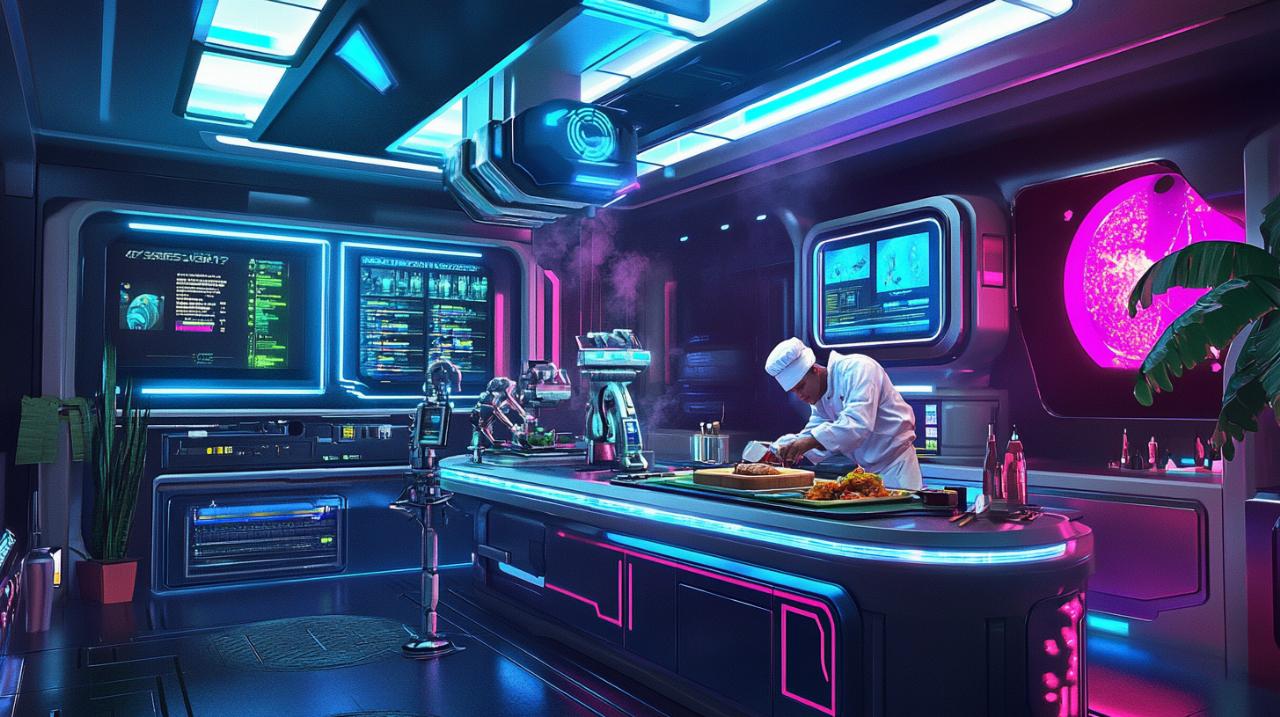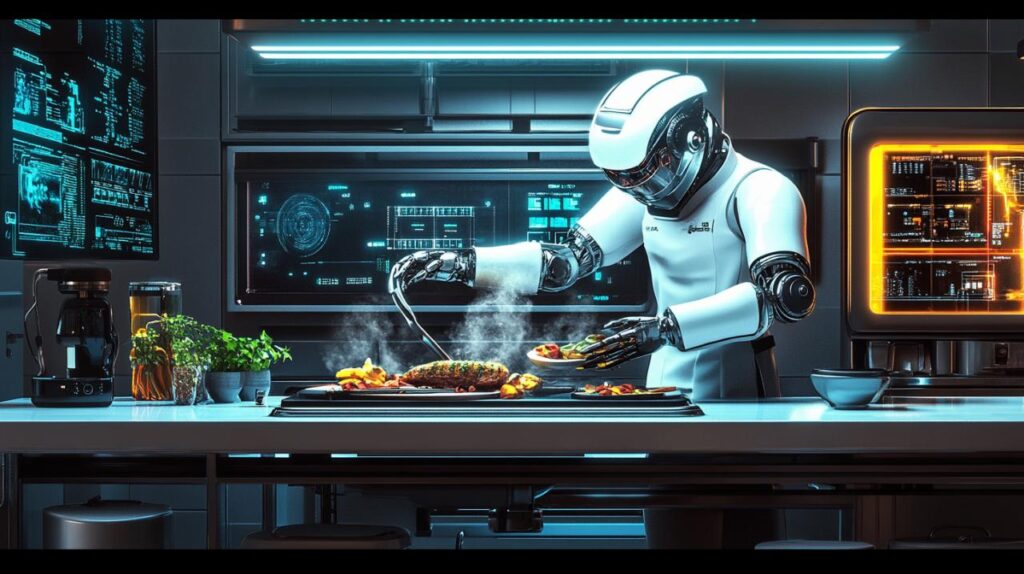The professional kitchen landscape has undergone a remarkable transformation in recent years, driven by the advent of sophisticated automation technologies that promise to revolutionise how commercial establishments prepare and serve food. From robotic systems capable of mimicking the precise movements of accomplished chefs to intelligent appliances that adjust cooking parameters in real time, these innovations represent a significant leap forward in culinary efficiency and consistency. As the hospitality industry faces mounting pressures related to labour shortages, rising operational costs, and heightened hygiene standards, the integration of advanced kitchen robotics has emerged as a compelling solution that addresses multiple challenges simultaneously.
Understanding Professional Kitchen Robotics and Their Impact on Modern Culinary Operations
What Are Professional Kitchen Robots and How Do They Function in Commercial Settings
Professional kitchen robots are sophisticated automated systems designed to perform a wide array of culinary tasks with minimal human intervention. These devices range from comprehensive robotic kitchens that can execute entire recipes from start to finish to specialised machines that focus on specific functions such as chopping, stirring, or precision cooking. One of the most ambitious examples comes from Moley Robotics, a London-based company that has developed a robotic kitchen system set to be released in the near future. This remarkable innovation features a robot chef that hangs from the ceiling and boasts the ability to prepare over five thousand recipes. Users simply add the required ingredients, and the system handles the entire cooking process autonomously. The technology behind such systems relies on a sophisticated three-dimensional cooking engine equipped with sensors and motors that meticulously replicate the movements of professional chefs. This level of precision ensures that each dish is prepared consistently, eliminating the variability that can occur with human cooking.
The functionality of these robots extends beyond mere automation. They incorporate advanced technologies such as artificial intelligence and computer vision, allowing them to adapt recipes in real time based on the ingredients available and the desired outcome. For instance, some systems can precisely weigh ingredients, ensuring that measurements are accurate down to the gram. This capability not only guarantees consistent results but also helps reduce food waste, as the robot uses exactly what is needed for each recipe. Safety is another critical consideration in the design of professional kitchen robots. Many systems, including the Moley Robotic Kitchen, feature protective glass screens and radar technology that stops the robot if it encounters an obstacle, thereby preventing accidents in the busy environment of a commercial kitchen. For those interested in exploring more about innovative kitchen technologies and trends, you can visit shopline blog to discover additional insights and resources.
The Evolution of Automated Cooking Technology in Professional Environments
The journey towards fully automated commercial kitchens has been gradual but steady, with each technological advancement building upon the last. Initially, kitchen automation focused on simple tasks such as mixing or heating, but modern systems now encompass the entire cooking process. The development of the Moley Robotic Kitchen involved collaboration with Chef Tim Anderson, the winner of MasterChef in 2011, whose cooking movements were meticulously recorded and programmed into the robot. This approach ensures that the robot can replicate not only the techniques but also the finesse of an experienced chef. The evolution of such technology reflects broader trends in the hospitality industry, where the demand for speed, consistency, and quality has driven innovation.
Beyond the high-end systems like Moley, other companies have entered the market with their own takes on kitchen automation. Kitchen Robotics, based in Israel, and Dexai Robotics from the United States are among the firms developing similar technologies tailored to commercial settings. Meanwhile, the French pizza chain Pazzi has implemented robotic systems in three locations, including two in Paris and one in Brussels. These robots handle every stage of pizza production, from pressing the dough to slicing the finished product, and can complete a pizza in approximately five minutes. The success of Pazzi has generated significant interest, with over a thousand enquiries from potential clients in countries such as Italy, the United Kingdom, the United States, and Germany. This widespread interest underscores the growing recognition of the potential benefits that robot chefs can offer, particularly in high-volume food service operations.
Top professional kitchen robots revolutionising commercial cooking efficiency

Leading Robotic Solutions for High-Volume Food Preparation and Service
When it comes to high-volume food preparation, several robotic solutions stand out for their ability to streamline operations and enhance efficiency. The Moley Robotic Kitchen, with its extensive recipe database and ability to operate around the clock, is particularly well-suited to establishments that require consistent output without the constraints of traditional labour schedules. The system is designed for luxury homes but has clear applications in professional settings where the demand for fresh, high-quality meals is constant. It features over fifty automatic cooking programmes, including options for vegetarian, vegan, low-calorie, and international cuisines. This versatility makes it an attractive option for restaurants and catering services that aim to offer diverse menus while maintaining operational efficiency.
Another noteworthy example is Nymble, which leverages artificial intelligence and computer vision to adapt recipes dynamically. This capability is particularly valuable in commercial kitchens where ingredient availability can fluctuate. By adjusting cooking parameters on the fly, Nymble ensures that the final dish meets quality standards regardless of minor variations in input materials. Similarly, Suvie combines multiple cooking methods, including steaming, baking, and induction heating, into a single unit. Its cool-to-cook feature allows ingredients to be stored safely until the cooking process begins, making it ideal for meal preparation services that need to manage large quantities of food efficiently. Thermomix, meanwhile, offers an all-in-one appliance with guided cooking and a recipe subscription service, providing both the hardware and the support needed to execute complex dishes with ease. These systems collectively represent the cutting edge of culinary technology, offering solutions that address the unique challenges faced by high-volume food service operations.
Comparing Features and Capabilities of Premium Kitchen Automation Systems
When evaluating professional kitchen robots, it is essential to consider a range of features and capabilities that can influence their suitability for specific applications. The Moley Robotic Kitchen, for instance, is positioned as a premium solution with a starting price of at least one hundred and fifty thousand pounds. This investment reflects the system’s advanced functionality, including its ability to perform complex tasks autonomously and its integration of eco-friendly resource-saving systems. The company claims that the system offers a return on investment of approximately forty thousand pounds annually, suggesting that it could pay for itself within three years. This financial proposition is particularly appealing to establishments that operate continuously and require a high degree of consistency in their output.
In contrast, other systems may offer more targeted functionality at lower price points, making them accessible to a broader range of businesses. For example, Nymble’s use of computer vision allows it to monitor the cooking process and make adjustments as needed, a feature that enhances precision without requiring the full suite of capabilities offered by more expensive systems. Suvie’s multi-functional design provides versatility in a compact form factor, making it suitable for kitchens with limited space. Thermomix’s guided cooking and recipe subscription service offer a balance between automation and user control, appealing to operators who value flexibility alongside efficiency. When choosing a kitchen robot, factors such as cooking needs, available space, budget, and the desired level of automation all play a role in determining the best fit. Establishments must weigh the benefits of advanced features against the associated costs, considering both immediate needs and long-term operational goals.
The advantages of integrating kitchen robots into professional settings extend beyond efficiency and consistency. These systems can promote healthier eating by allowing precise control over ingredients and cooking methods, reducing the risk of cross-contamination and improving overall hygiene. Automated cutting and cooking also minimise the risk of workplace injuries, creating a safer environment for staff. Furthermore, the ability to reduce food waste through accurate ingredient measurement aligns with growing concerns about sustainability in the hospitality industry. However, the adoption of such technology is not without challenges. Experts have noted that while robot chefs can reduce the spread of viruses and improve cleanliness, they may also lead to job losses in the sector. A restaurant owner in Maidenhead has expressed scepticism about the ability of robots to replicate the human touch that is central to fine dining experiences. These considerations highlight the need for a balanced approach that leverages the strengths of automation while preserving the elements that make dining a uniquely human experience. As the technology continues to evolve, it is likely that professional kitchen robots will become an increasingly common sight in commercial kitchens, offering a powerful tool for enhancing both efficiency and quality in food preparation.

